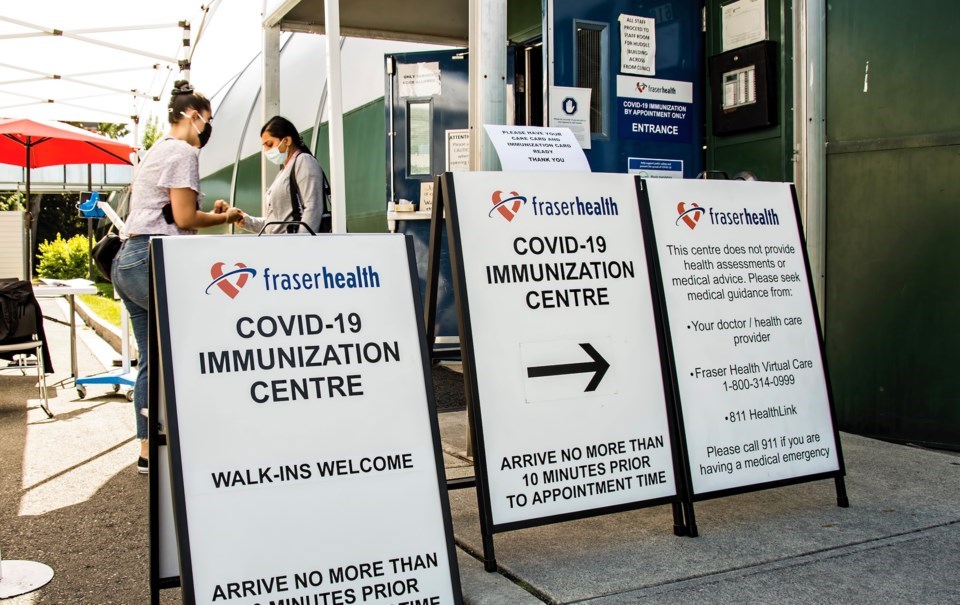The trend of slowing booster shots in Burnaby adults is continuing, according to updated provincial data.
The BC Centre for Disease Control (BCCDC) says 65 per cent of Burnaby adults have rolled up their sleeves for a booster against the virus.
There was no change from the previous numbers released on May 1.
Booster shot rates across Fraser Health are as follows, as of May 8:
- New Westminster - 66 per cent
- South Surrey/White Rock - 66 per cent
- Burnaby - 65 per cent
- Tri Cities - 65 per cent
- Delta - 64 per cent
- Maple Ridge/Pitt Meadows - 58 per cent
- Langley - 58 per cent
- Agassiz/Harrison - 57 per cent
- Surrey - 53 per cent
- Chilliwack - 51 per cent
- Hope - 49 per cent
- Abbotsford - 48 per cent
- Mission - 47 per cent
B.C. COVID modelling group says second Omicron wave has peaked
The sixth wave of COVID-19 that has spread through the province has peaked and started its decline, according to a member of the B.C. COVID-19 Modelling Group.
Sally Otto, a COVID-19 modelling expert, doesn’t use the description “sixth wave,” used throughout Canada to describe the current number of cases arising from the Omicron BA.2 sub-variant and instead refers to this period as a second Omicron wave.
“What we are seeing — which is great news — is signs that the BA.2 wave is declining,” said Otto, an evolutionary biologist and mathematical modeller at the University of British Columbia. “We’re seeing [the decline] in the wastewater, we’re also seeing it in the number of cases over age 70,” said Otto. “We’ll have a report out on Wednesday.”
The decline isn’t steep, said Otto, but there was a plateau last week and the growth rate since is negative and enough to give modellers confidence it’s on a downward trend. The levels of infection for the second Omicron wave are half that of the first Omicron wave in January and February, which was the highest infection numbers so far in the pandemic, she said.
If people have the sense that many around them are getting or have recently had COVID-19 it’s because we’re dropping from sky-high levels to almost sky-high, she said.
Otto said she wouldn’t count on a summer reprieve.
“It’s not like the flu and it still has a high enough transmission rate that you can get strong waves, even in the summer season,” said Otto.
Summer weather will undoubtedly bring people into more outdoor areas, where infection is less likely, but “I’m not sure that we can count on the summer without a wave,” said Otto.
- with files from Cindy E. Harnett, Times Colonist



